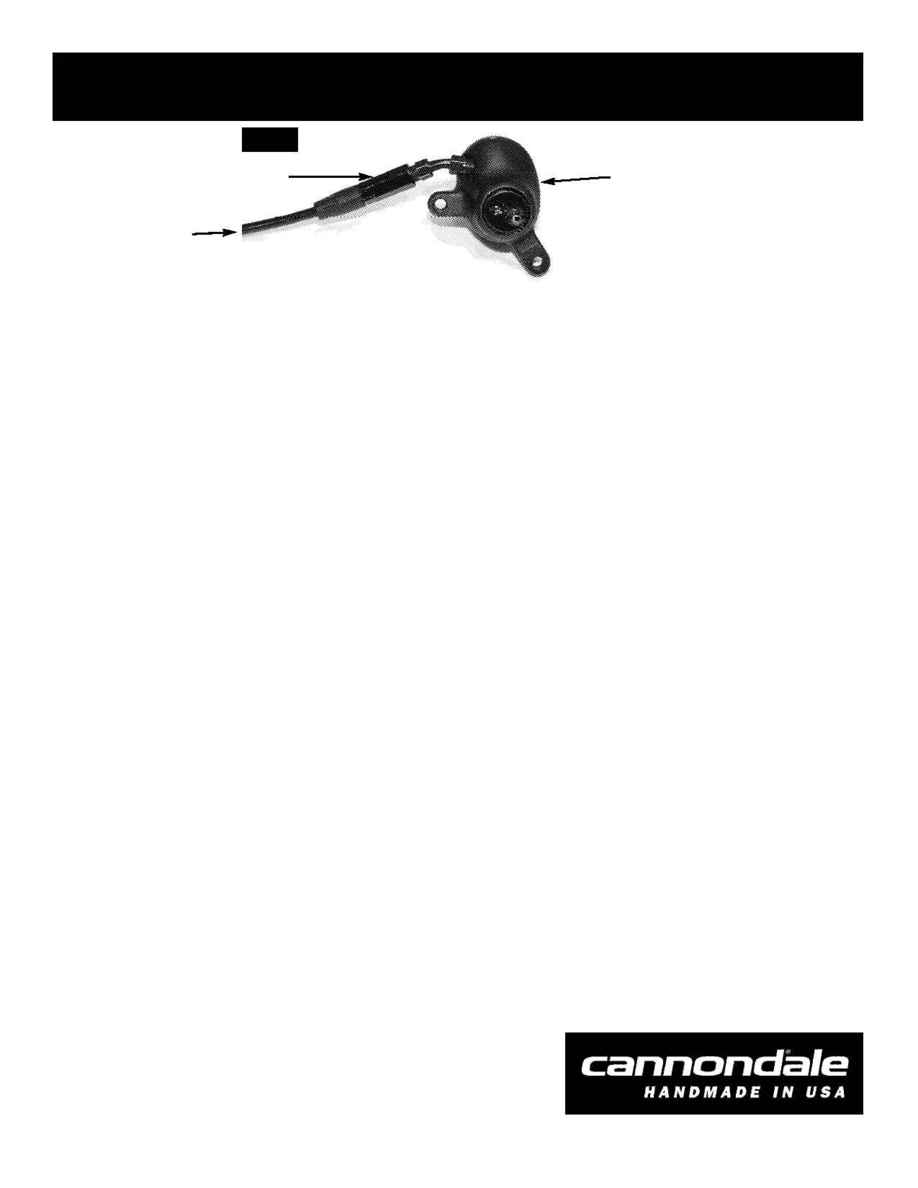
CODA
®
Expert Disc Brake Instruction Supplement
As part of our constant product improvement, CODA Expert Disc Brakes for 2001 are being equipped with a tubing connection standoff. It is
a metal tube and hex fitting which attaches between the brake tubing and the brake caliper. This standoff allows the use of both types of pads;
"blue" Kevlar all-condition pads and the optional sintered metallic upgrade brake pad kit QC140/. Note that in addition to the sintered brake
pads, kit QC140/ also includes a tubing connection standoff to allow upgrading of pre-2001 CODA disc brakes. See Fig. 1 above for a photo
of the standoff.
The CODA Expert Disc Brake comes supplied with the all-condition "blue" pads that are designed for optimal braking and wear in most
conditions. These pads are available as replacement kit QBDPAD/BLU for one pair of pads. "Blue" pads can be identified by the letter "B" in
the date code found on the brake pad handle. For example, a "blue" pad might have the code R15B0, where the "R" is for right pad, "15" is
the week of manufacture, "B" is for blue, and "0" is the last digit of the year 2000.
The optional sintered metal brake pads are designed for foul weather use in wet, muddy, snowy, or acidic soil conditions where brake pad
wear is extremely accelerated. A gold colored brake pad backing plate and the letter "S" in the date code found on the brake pad handle identify
these pads. A "sintered" pad might have the code L21S0, where the "L" is for left pad, "21" is the week of manufacture, "S" is for sintered, and
"0" is the last digit of the year 2000.
WARNING:
WARNING:
The sintered metal brake pads must only be used in conjunction with the tubing connection
standoff! The sintered metal pads produce more heat than the "blue" pads, and if the standoff is not
used, the brake system could overheat, resulting in brake system failure or loss of braking control
which could cause serious injury or death.
CAUTION:
CAUTION:
Be aware that the increased durability of the optional sintered metal pads will also increase
the wear on CODA disc brake rotors. As outlined in the CODA Expert Disc Brake Owner's Manual, the
rotors are 1.98 mm (.078") thick when new, and should be replaced when they are 1.73 mm (.068") or
thinner due to wear.
CAUTION:
CAUTION:
The sintered metal brake pads should not be used for downhill riding or for long descents
in which the brake will be constantly applied. Such dragging of the brakes will produce enough extra
heat to expand the brake fluid and cause "pump", a feeling that the brake lever engages the pads to the
rotor earlier in the lever travel. In extreme cases, the brakes may pump up enough to drag on the disc
without any pulling of the brake lever.
See the complete CODA Disc Brake instruction manual that originally came with your bike or disc brake set for information and warnings about
the CODA Disc Brake system, including the pads.
The complete CODA Disc Brake instruction manual can be downloaded and printed from the Tech Center of the CODA website, or you can have
a replacement copy sent to you by contacting us by email or at one of the phone numbers below.
For more information on this or any CODA product, please feel free to contact us.
USA and Canada:
(888) CODA-USA
Europe (EC):
(31) 541-573580
Japan:
(81) 722-99-9399
Australia:
(61) 2-9979-5851
http://www.codausa.com
custserv@cannondale.com
JCH 060900 #112061
©Cannondale Corp. 2000, 16 Trowbridge Dr., Bethel, CT
Fig.1
Fig.1
Brake Caliper
Tubing Connection Standoff
Brake Tubing
